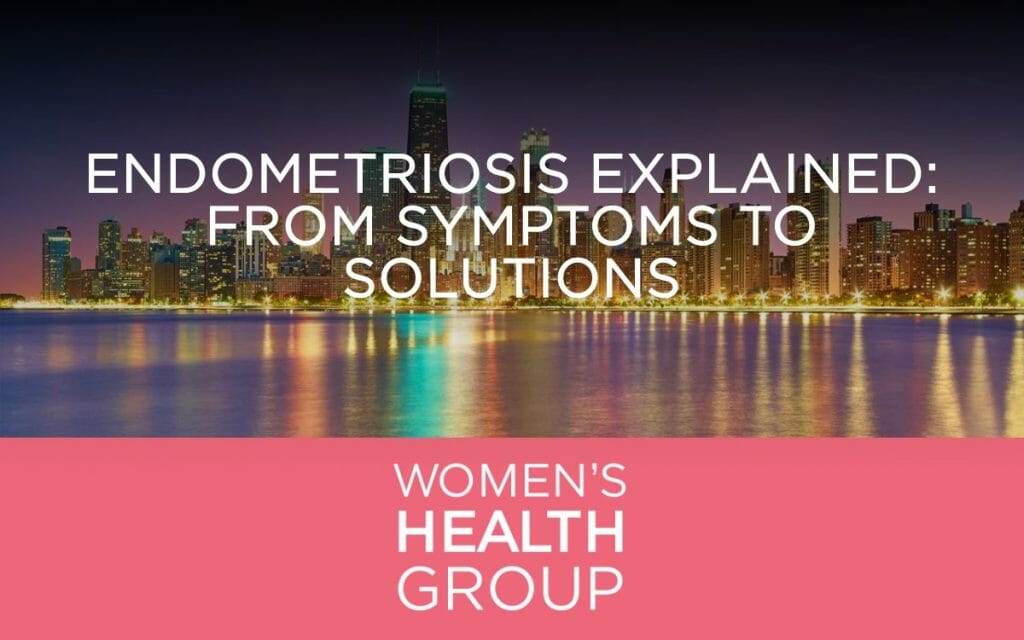Understanding Endometriosis
Endometriosis is a frequently encountered health issue among women of reproductive age, impacting an estimated 10% of women worldwide, according to a report by the Office on Women’s Health. As a health group committed to promoting women’s health in Chicago, Illinois, we believe in the importance of educating our readers about this prevalent, yet often misunderstood disorder. Our goal is to illuminate the path from symptoms to solutions, providing the educational content you need on your journey with endometriosis.
Endometriosis: The Condition Explained
Endometriosis is a gynecological condition that occurs when tissue akin to the endometrium, the tissue that lines the uterus, starts growing outside the uterus. It most commonly involves the ovaries, fallopian tubes, and the tissue lining the pelvis, but in rare instances, the endometrial-like tissue may spread beyond pelvic organs. This displaced tissue behaves like the endometrium – it thickens, breaks down, and bleeds with each menstrual cycle. However, because this tissue has no way to exit your body, it becomes trapped, leading to various complications.
Spotting the Signs of Endometriosis
Women with endometriosis typically present diverse symptoms, which can range from mild to severe. The intensity of symptoms doesn’t always correspond with the extent of the disorder – some women with mild endometriosis may experience crippling pain, whereas others with advanced endometriosis might have little or no discomfort.
The common symptoms of endometriosis include:
- Painful periods (dysmenorrhea)
- Pain with intercourse
- Pain with bowel movements or urination, usually during menstrual periods
- Excessive bleeding either during periods (menorrhagia) or between periods (menometrorrhagia)
- Infertility, which in some cases, might be the only sign that you have endometriosis
- Other symptoms may include fatigue, diarrhea, constipation, bloating, or nausea, especially during menstrual periods
The Diagnosis Journey
Diagnosing endometriosis can be complicated due to its varied symptoms, many of which overlap with other conditions like ovarian cysts or pelvic inflammatory disease. The diagnostic process usually involves a detailed discussion of your symptoms and medical history, a pelvic exam, ultrasound, and in some cases, a laparoscopy. Confirming endometriosis as the culprit behind your symptoms often necessitates a surgical procedure known as laparoscopy, in which a camera-equipped instrument allows visualization of the reproductive organs and any endometriotic lesions.
Endometriosis Treatment Options
While there’s no definitive cure for endometriosis, there are numerous treatment options tailored to manage symptoms and improve quality of life. Treatment depends primarily on the extent of the disease, symptoms, and whether you have certain future plans, like pregnancy. The different treatments usually revolve around pain medication, hormonal therapy, and surgical intervention, each with its own pros and cons.
For more detailed insight on the condition, the Mayo Clinic provides comprehensive information on this devastating disorder.
Living with Endometriosis
Endometriosis is a chronic disease that can significantly affect a woman’s quality of life. It can cause severe physical pain and psychological distress and might impact personal relationships, career, and fertility. However, with the right management plan in place and support from healthcare professionals, most women can find their symptoms significantly reduced and lead fulfilling lives.
Take Home Messages
Endometriosis is a complex and unpredictable disorder with a diverse symptom profile that varies greatly among women. Early recognition, diagnosis, and treatment can help alleviate symptoms and improve quality of life. Don’t hesitate to seek medical attention if you have persistent symptoms that concern you. As a medical group deeply rooted in women’s health, we work tirelessly to support those affected by endometriosis and strive to keep you informed, empowered, and confident about managing your health.




